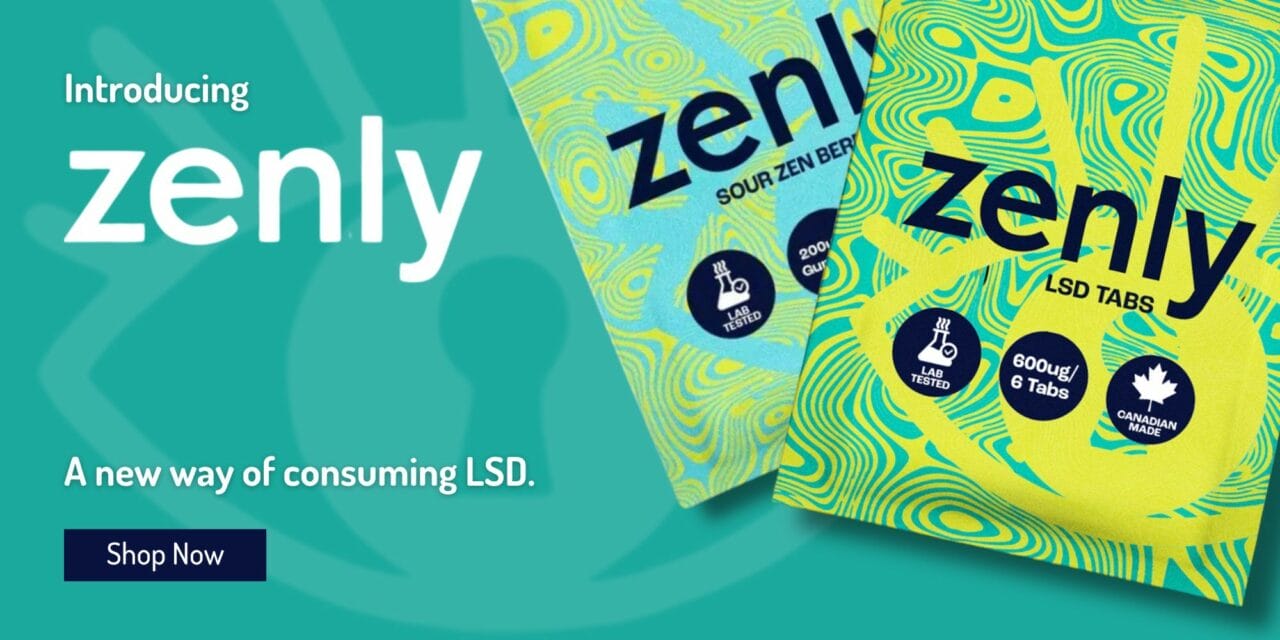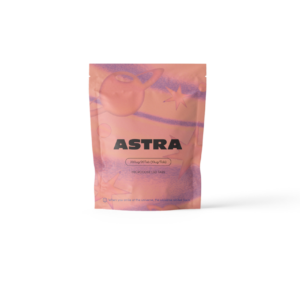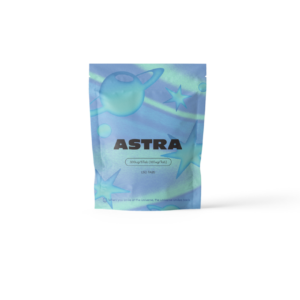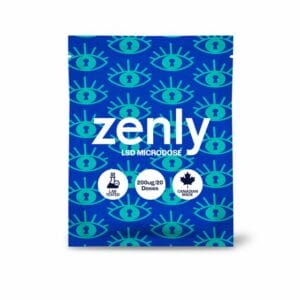-
Astra – LSD Microdose Stars – 200ug (10ug per star) | Mushrooms Online Canada
0 - 0 reviews
$70.00
-
Astra – LSD Stars – 600ug (100ug per tab) | Mushrooms Online Canada
5 - 1 review
$85.00
-
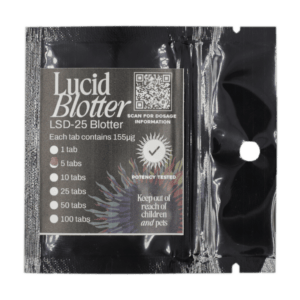
Select options
This product has multiple variants. The options may be chosen on the product page
Lucid Supply Co. – LSD Blotter Tabs – 155µg | Mushrooms Online Canada
5 - 4 reviews
From $20.00
-

Select options
This product has multiple variants. The options may be chosen on the product page
Zenly – LSD Gel Tabs – 600ug (100ug per tab) | Mushrooms Online Canada
4.9 - 16 reviews
From $90.00
-
Zenly – Microdose LSD Gel Tabs – 200ug (10ugx20) | Mushrooms Online Canada
5 - 2 reviews
$90.00
In-depth Understanding of LSD Tabs
LSD tabs, a popular form of ingesting LSD, are created by immersing tiny blotter paper squares in liquid LSD until they are dry. The packaging often boasts vibrant designs or whimsical cartoons for heightened visual appeal. Each tab, about a quarter-inch square, comprises around 900 doses in a solitary sheet. The LSD concentration in each tab generally ranges between 60ug and 100ug, though some tabs may carry higher doses. It is crucial to understand that the actual dosage can vary, highlighting the importance of testing to accurately determine the drug’s potency.…
Explaining LSD
Lysergic acid diethylamide (LSD) is a potent hallucinogenic substance that dramatically alters perception and intensifies sensory experiences. LSD is procured from “ergot,” a fungus that thrives on rye and other grains. Dr. Albert Hofmann, a Swiss research chemist, discovered LSD’s hallucinogenic properties in 1943. Initially, it was studied for potential insights into various mental health disorders. In the 1950s, intellectuals like Aldous Huxley were intrigued by LSD, attracted by its alleged ability to promote cosmic consciousness.
A Concise History of LSD Research
Incomplete research has made it difficult to gain a full understanding of LSD’s true potential and therapeutic advantages. Early investigations into the medical uses of LSD and other hallucinogens yielded plenty of data, as reported in over 1,000 scientific papers and deliberated at six international conferences. However, these initial studies had shortcomings, such as lack of control groups and potential publication bias. Recently, researchers received permission to revisit LSD use and examine its potential benefits for treating mental health disorders and other health issues.
How LSD Tabs Impact the Body
The body’s response to LSD can greatly vary among individuals. The first effects from oral ingestion can be felt within 30 to 45 minutes, peak within 2 to 4 hours, and may last 12 hours or more.
Physical Effects
- Dilation of pupils
- Increased body temperature
- Reddening of the face
- Rapid heart rate
- High blood pressure
- Excessive sweating
Psychological Effects (LSD Trips)
The effects of LSD are dependent on the consumed dosage.
| DOSAGE |
EFFECTS |
| 25 – 75 ug |
- Mild feeling of happiness
- Minor visual alterations
|
| 75 – 150 ug |
- Respiration changes
- Visual distortions from slight to extreme
- Retention of self-awareness
|
| 150 – 200 ug |
- Strong visual transformations
- Exploration of spirituality
|
| 200 – 300 ug |
- Deep LSD adventure
- Preservation of self-identity
- Emergence of illogical thoughts and recurring patterns
- Bright visuals when eyes are closed
|
| 300 – 400 ug |
- Dissolution of self or ego
- Vivid visual experiences
- Unsteadiness
|
| 400 – 500 ug |
- Alterations in time perception
- Ego disintegration
- Confusion
- Lack of logical reasoning
|
| 500 – 700 ug |
- Difficulty distinguishing objects
- Disconnection from reality
- Profound spiritual encounters
|
| 700 – 1000 ug |
- Complete out-of-body sensation
- Loss of logical thinking
|
| 1000 – 1500 ug |
- Total suspension of reality perception
- Primarily focused on visual hallucinations
|
| 1500 ug and above |
- Experience similar to the effects of DMT
- Complete loss of self-awareness
- Powerful visual and auditory hallucinations
- Fusion of objects
|
Advantages
A common misconception is to assume that the only purpose of taking LSD is Clear of Heat
Heat exposure can lead to LSD degradation. Therefore, it is advisable to store it in a cool environment.
- Preserving it in the refrigerator can uphold its strength
|
| Prevent Humidity |
Humidity can likewise deteriorate LSD.
- Storing it in a dry location is advantageous
|
LSD, when taken in controlled doses, can offer numerous potential benefits. However, it’s essential to consider that each person’s body chemistry is different, and LSD effects can significantly differ among individuals. Always consult a professional before introducing any new substance.
LSD: More Than Just a Psychedelic Substance
LSD, or lysergic acid diethylamide, is frequently viewed as a powerful hallucinogenic drug. However, when consumed in controlled, microdoses, it might provide numerous benefits, such as extended sleep, increased creativity, and diminished anxiety and depression.
Prolonged Sleep
A study conducted in Australia and published on the medRxiv preprint server proposes a potential link between microdosing LSD and extended sleep durations. The research analyzed 3,231 nights of sleep data and discovered that participants who microdosed LSD slept an additional 24.3 minutes the subsequent night.
Boosted Creativity
A report published in the Psychopharmacology Journal revealed a significant relationship between microdosing and elevated levels of creativity and openness. Participants displayed their creativity by inventing unique applications for common objects like bricks and knives. This suggests an improvement in divergent thinking skills, as participants were able to propose more imaginative and practical uses for ordinary items.
Anxiety and Depression
LSD has been noted to trigger profound mystical experiences in both healthy individuals and patients, often resulting in long-term positive alterations in mood and personality. This can prove beneficial for those struggling with anxiety, depression, and substance abuse disorders (alcohol or nicotine). In a study led by Peter Gasser from the Medical Office for Psychiatry and Psychotherapy, a significant reduction in depression levels and considerable improvement in life quality were observed. A follow-up study a year later with nine participants reported continuous reductions in anxiety and enhanced life quality, with no enduring adverse reactions after LSD administration.
How to Administer LSD Tabs?
The typical method among consumers is to place a single tab or a fragment of a tab under the tongue, similar to an LSD solution, and keep it there for approximately 10 minutes. While some recommend holding it under the tongue for nearly 45 minutes, anecdotal evidence suggests little difference in You can expect to start feeling the effects within 10 to 15 minutes. After the initial 10 minutes, the blotter can be either swallowed or taken out of the mouth and thrown away.
Does the efficacy of LSD tabs decline over time?
Yes, LSD can become less potent over time, especially when not stored correctly or when exposed to harsh conditions. Therefore, appropriate storage conditions are essential to preserve the potency of your tabs. If stored correctly, they can retain their potency for several months or even years.
| Keep Away from Light |
LSD is extremely sensitive to light, particularly ultraviolet (UV) and fluorescent light.
- It is advised to store LSD in dark places
|
| Prevent Heat Exposure |
Heat can cause LSD to degrade, so storing it in a cool location is ideal.
- Refrigerating it can help maintain its potency
|
| Manage Humidity |
LSD can also be degraded by moisture.
- It is beneficial to store it in a dry environment
|
Although LSD can provide numerous potential benefits when used in controlled doses, keep in mind that its effects can vary greatly among individuals due to differences in body chemistry. Always seek advice from a professional before starting any new substance. Keep Away from Humidity
Humidity can accelerate chemical reactions and promote microbial growth.
- Store them in a room with good ventilation and an air conditioner.
- Use desiccant packets alongside the tabs to prolong their shelf life.
|
| Avoid Heat |
High temperatures can harm LSD.
- Choose a cool storage area
|
| Limit Air Exposure |
While not as harmful as humidity or heat, exposure to air can result in LSD degradation.
- Use airtight containers such as mason jars
|
The Onset and Duration of LSD Effects
Expect to start feeling the effects about 30 minutes after ingestion. The intensity will reach its peak around the second hour, and start to lessen around the fourth hour. During this time, the experience can fluctuate and vary in intensity until about the six to seven-hour mark (comedown). At this point, some users may start to feel normal again. Generally, users report that the effects fully cease around ten hours after the dose. Afterward, it’s common to have extended mood enhancement and increased consciousness that can last for several days or weeks—commonly known as the afterglow.
Purchase LSD from Zoomies Canada
Zoomies Canada is your go-to source for high-quality lysergic acid diethylamide and other psychedelic substances. Our Shroomies online platform showcases an extensive range of LSD products for you to browse at your own pace. Enjoy the comfort of having LSD delivered directly to your doorstep anywhere in Canada.
Commonly Asked Questions
What is the taste of tabs?
Ideally, tabs should not have a taste. Pure LSD is devoid of flavor and smell. If you notice a bitter or unpleasant taste, or feel a tingling or numb sensation where the tab is placed, it may imply the substance is not pure LSD. If your tab tastes distinct, dispose of it immediately. This taste could be due to 25I-NBOMe, a compound that replicates the effects of acid but carries significantly higher hazards. For safety purposes, it’s advisable to use a reagent test kit to verify a small sample of your tab before consumption. This precautionary measure can confirm the purity and safety of the substance before you ingest it.
Are There Different Types of LSD Products?
Yes, a variety of LSD products are readily available. While blotter paper or tabs are the most common forms, other types include liquid LSD, sugar cubes or gelatin, and edibles.
What are the Safety Precautions for LSD Tab Consumption?
- Use Ehrlich and Hoffmann reagents for testing.
- If you are a first-time user, proceed with caution and limit yourself to one tab.
- If the effects take time to manifest, remain patient and avoid taking more.
- Ensure you are accompanied by reliable, sober individuals during your experience.
- Evaluate your mental state before consuming LSD. If you are feeling anxious, depressed, or troubled, it’s best to refrain.
- Pick a safe and familiar setting for substance use.
- Clear your schedule and allocate the entire day for your LSD journey, even if the effects wear off after a certain time.
- Avoid using LSD if you or a close relative have been diagnosed with schizophrenia or psychosis.
What Does LSD Microdosing Mean?
Microdosing offers a viable method for those seeking the health benefits of LSD without the intensity of a full psychedelic trip. This practice allows users to harness the possible advantages of LSD at doses typically ranging between one-tenth and one-twentieth of a typical dosage.
 Select options This product has multiple variants. The options may be chosen on the product page
Select options This product has multiple variants. The options may be chosen on the product page Select options This product has multiple variants. The options may be chosen on the product page
Select options This product has multiple variants. The options may be chosen on the product page
